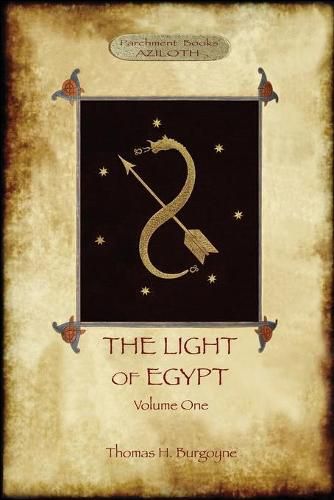Readings Newsletter
Become a Readings Member to make your shopping experience even easier.
Sign in or sign up for free!
You’re not far away from qualifying for FREE standard shipping within Australia
You’ve qualified for FREE standard shipping within Australia
The cart is loading…






This title is printed to order. This book may have been self-published. If so, we cannot guarantee the quality of the content. In the main most books will have gone through the editing process however some may not. We therefore suggest that you be aware of this before ordering this book. If in doubt check either the author or publisher’s details as we are unable to accept any returns unless they are faulty. Please contact us if you have any questions.
Thomas H. Burgoyne was born in Scotland on April 14, 1855. He grew up a gifted psychic and later became an ardent student of Hermetic Philosophy. After emigrating to the USA at the age of twenty-five, he met Norman Astley, who was himself an accomplished occultist. Impressed by the depth of Burgoyne’s esoteric understanding, Astley persuaded him to set down his knowledge in a series of lessons. The Light of Egypt Vol 1, published in 1889, is the fruit of these labours.
The tome is, in fact, two books in one: the first dealing with the Science of the Soul, while the second treats of the Science of the Soul and the Stars.
The information presented here will astound with its breadth of vision and the obvious truth of the genuine Hermetic Tradition. The book forms a perfect introduction into esoteric and occult studies, and even high-grade initiates will find concepts here that may perhaps shake some of their core preconceptions. It has truly been called One of the masterpieces, both of writing and of instruction … there is nothing comparable to it in the English language. (Emma Hardinge Britten, The Two Worlds).
This edition has been fully revised by a Rosicrucian Adeptus Minor and several errors/omissions - found in some extant editions - have been corrected, viz.: misprinted tables rectified, three ‘lost’ diagrams added, and five missing chapters inserted in their correct sequence. An Index is included.
$9.00 standard shipping within Australia
FREE standard shipping within Australia for orders over $100.00
Express & International shipping calculated at checkout
Stock availability can be subject to change without notice. We recommend calling the shop or contacting our online team to check availability of low stock items. Please see our Shopping Online page for more details.
This title is printed to order. This book may have been self-published. If so, we cannot guarantee the quality of the content. In the main most books will have gone through the editing process however some may not. We therefore suggest that you be aware of this before ordering this book. If in doubt check either the author or publisher’s details as we are unable to accept any returns unless they are faulty. Please contact us if you have any questions.
Thomas H. Burgoyne was born in Scotland on April 14, 1855. He grew up a gifted psychic and later became an ardent student of Hermetic Philosophy. After emigrating to the USA at the age of twenty-five, he met Norman Astley, who was himself an accomplished occultist. Impressed by the depth of Burgoyne’s esoteric understanding, Astley persuaded him to set down his knowledge in a series of lessons. The Light of Egypt Vol 1, published in 1889, is the fruit of these labours.
The tome is, in fact, two books in one: the first dealing with the Science of the Soul, while the second treats of the Science of the Soul and the Stars.
The information presented here will astound with its breadth of vision and the obvious truth of the genuine Hermetic Tradition. The book forms a perfect introduction into esoteric and occult studies, and even high-grade initiates will find concepts here that may perhaps shake some of their core preconceptions. It has truly been called One of the masterpieces, both of writing and of instruction … there is nothing comparable to it in the English language. (Emma Hardinge Britten, The Two Worlds).
This edition has been fully revised by a Rosicrucian Adeptus Minor and several errors/omissions - found in some extant editions - have been corrected, viz.: misprinted tables rectified, three ‘lost’ diagrams added, and five missing chapters inserted in their correct sequence. An Index is included.